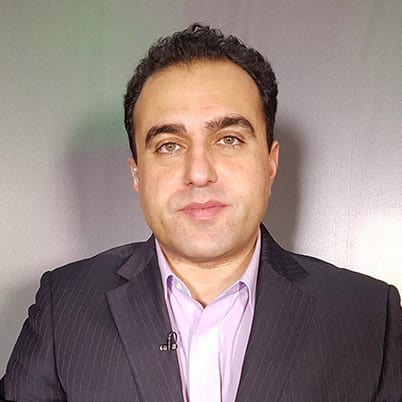The latest ceasefire in south-west Syria, negotiated by the United States and Russia, is a clear reflection of increasing US-Russian cooperation in the country. Whilst this is a welcome development in terms of managing the broader strategic ramifications of the Syrian conflict, nonetheless it falls far short of adequately addressing the real issues on the ground.
The evolving Russo-American strategy appears to take aim at the strength of both the Syrian government and its armed adversaries. In so far as the Syrian rebels are concerned this strategy is premised on the “divide and rule” doctrine in so far as it seeks to destroy any unified rebel leadership by way of localising the conflict.
In respect to the Syrian government, these local ceasefire arrangements and “de-escalation” zones take aim at Syrian sovereignty and at minimum undermine the government’s authority to intervene decisively in conflict zones. This development has long-term ramifications in respect of bringing about a lasting solution to the Syrian conflict.

Russia’s President Vladimir Putin (L) and US President Donald Trump (R) hold a bilateral meeting on the sidelines of the G20 summit in Hamburg, Germany, on July 7, 2017. ( Russian Presidential Press and Information Office – Anadolu Agency )
Another major shortcoming of greater Russo-American cooperation is that it seeks to diminish the role of other foreign powers in the Syrian conflict, notably Iran and Turkey. Both states are deeply involved in the Syrian conflict by backing opposing sides and trying to create optimal conditions for long-term influence wielding in the country. As far as the facts on the ground are concerned, Turkey and Iran have greater influence than both Russia and the US, an inconvenient fact that is likely to frustrate Russo-US grand strategising in Syria.
Multiple ceasefires
The latest ceasefire covering the southwest, including the Dara’a, Suwayda and Quneitra provinces, is the most complex to date in as much as it involves both Jordan and Israel. The latter’s involvement hints that the Russians are willing to accommodate Israeli fears of a long-term Iranian and Hezbollah presence in the Quneitra province adjoining the Israeli-occupied Golan Heights.
However, at the foundational level, the latest ceasefire – despite its complexity – mirrors similar arrangements entered into by the Syrian government and its armed adversaries. The latest example is the localised ceasefire in Eastern Ghouta which aims to end a five-year brutal attrition warfare in the eastern suburbs and satellites of Damascus.
The Syrian government strategy has rested on waging attrition warfare, reinforced by a siege, with a view to bringing local rebel factions to heel. The resulting “ceasefire” often involves rebel fighters being displaced to other conflict zones. Needless to say, these arrangements disproportionately benefit the Syrian government in so far as they relieve immediate pressure on sensitive fronts. Moreover, the government benefits in the longer term by displacing rebels to other conflict zones which intensifies intra-rebel friction, thus creating additional opportunities for government gains.
But the ceasefire agreement covering the southwest illuminates the limitations of this strategy – indeed it highlights the limited reach of the Syrian government inside its national territory – in so far as multiple foreign powers are party to this agreement. Whilst this prevents rebel displacement, and ostensibly keeps protagonists apart, it does little to produce lasting conflict resolution.
Temporary solution
The US-Russian brokered ceasefire is not short of critics in America, most of whom appear to be opposed to it on the grounds that it doesn’t adequately address (and thus contain) Iran’s role in Syria. American objections aside, the sidelining of critical players like Iran is a major problem which is likely to complicate future diplomacy and negotiations. At minimum, it will entrench the Iranian position of backing Syrian President Bashar Al-Assad indefinitely.
Another major problem with this type of deal is that it formalises the role of Syrian opposition factions as vassals of foreign powers. Whilst this is now the reality for the most part, most of the so-called “moderate” opposition factions are visibly aligned either to the United States or Turkey, crucially the most effective rebels remain relatively independent.
The independent rebels, the kernel of which is composed of the jihadist group Tahrir Al-Sham, are now mostly concentrated in Idlib province. Much of this province remains in rebel hands and the Syrian government has defied expectations by not pressing home its advantage following the retaking of Aleppo in December by launching an offensive against Idlib. This hesitation may well reflect behind the scenes negotiations between the Russians and the Americans as to the precise circumstances pertaining to the retaking of Idlib.
#SyriaCeasefire
Provided the ceasefire in the southwest holds, the next step in Russo-American cooperation may involve a Russian-sponsored move against Idlib. The retaking of this province, and by extension the dispersal of Tahrir Al-Sham and its allies, will signal the end of credible opposition to the Syrian government and further entrench the role and position of foreign-sponsored groups.
The sum of diplomatic and military activities points to the conclusion of major fighting in Syria probably by mid-2018. However, the localised nature of ceasefires and de-escalation zones, in addition to the prominent role of multiple foreign powers, raises doubts as to whether Syria can fully regain its sovereignty and territorial integrity.
The views expressed in this article belong to the author and do not necessarily reflect the editorial policy of Middle East Monitor.

![Warplanes belonging to the Assad regime in Syria on March 20, 2017 [Diaa Al Din/Anadolu Agency]](https://i0.wp.com/www.middleeastmonitor.com/wp-content/uploads/2017/03/2017_3_20-Assad-Regime-continues-to-violate-ceasefire-in-Syria20170320_2_22521115_20086440.jpg?fit=920%2C613&ssl=1)








